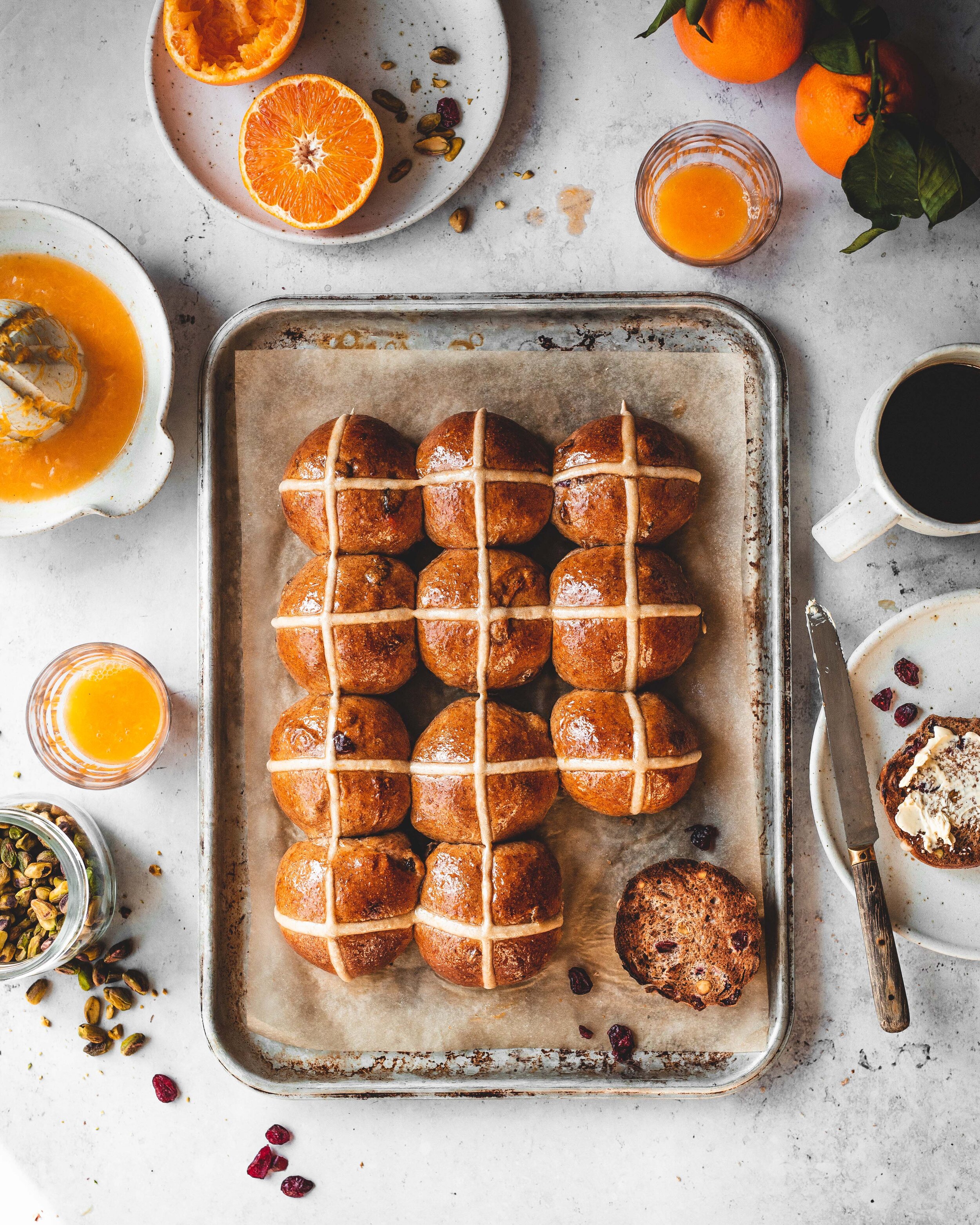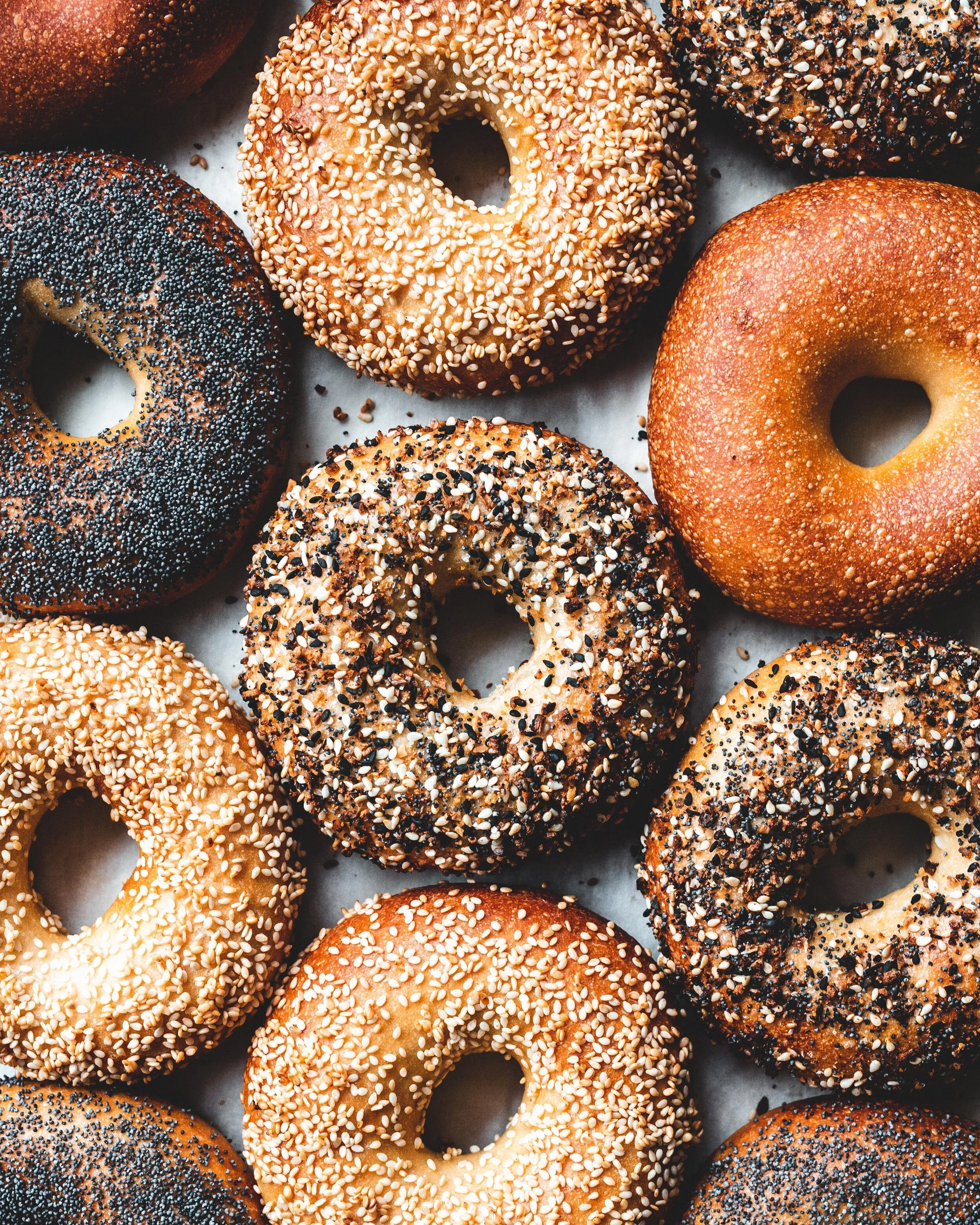It’s clear if you’ve ever read more than one recipe on this site that I am not vegan. I always say veganising a recipe is a skill I don’t necessarily posses and whilst that is true I want to try harder and include more vegan recipes and options on the site. This recipe, a slight spin on classic hot cross buns, wasn’t originally a result of that thinking though. It was through necessity. I wanted to post a really good hot cross bun recipe for easter but I was concerned in this mad world we are all living in right now that a couple of the required ingredients were on the scare side at the moment. Removing the eggs would be fine, you can make a lovely bread dough with enriching it with eggs, but flour..well flour is needed for hot cross buns. I decided to go with spelt because I had found it to be available at a couple supermarkets still, ignored by those panic buying all the bread flour. Thankfully spelt makes for wonderful breads and works particularly well in this recipe. With no eggs, turning the recipe fully vegan seemed like a no brainer, the only other ingredients were milk and butter and vegan versions of those would be very easy straight swaps.
For the flavourings I kept everything fairly classic, lots of spice and dried fruit but I switched things up just a little using dried cranberries and pistachios instead of the traditional raisins and currants, but as always use whatever you prefer.
Since we are also in our houses with no access to friends and family right now it is worth nothing these also freeze brilliantly. Once the buns are fully cooled separate them, place them onto a tray that will fit in your freezer and freeze until solid. At this point you can put them in a ziplock bag or box and they wont stick together. Defrost them and serve them warm with butter and you’ll have an incredible breakfast waiting for you.
The Buns
500g spelt flour (I used a mix of Doves Farm white and wholewheat spelt flours)
1 1/2 tsp fine sea salt
2 tsp mixed spice
1 tsp ground cinnamon
50g caster sugar
7g fast action dried yeast
300ml almond milk (other plant milks should also work fine)
65g vegan ‘butter’ block (I used stork block as it seems like the easiest to find in the UK)
85g dried cranberries
50g pistachios, roughly chopped
The Cross
3 tbsp spelt flour
3-4 tbsp almond milk
Apricot Glaze (optional)
2 tbsp smooth apricot jam
To make the dough place the flour, salt, spices, sugar and yeast into the bowl of a stand mixer and add in the milk and fat. With the dough shook attached mix on low speed until a shaggy dough is formed. Now at this point it is worth noting the differences when using spelt flour. The flour has gluten but it breaks down a lot easier than regular wheat flour so don’t be tempted to knead this for a long time, we’re going to do another 3-5 minutes on low speed just until the dough becomes smooth and looks a little elastic.
Note: since we are talking about flour lets talk about availability. I know right now flour is scarce so I wrote this recipe with spelt as I noticed it was still available in some supermarkets I visited. If you have regular bread flour at home don’t worry just sub it in, kneading fully for about 10 minutes as you would with a normal bread dough. Also if I understand the situation properly you should see start seeing flour appear on supermarket shelves again soon, it wasn’t really a shortage but a supply chain issue because of the panic buying, it should start flowing back into the chain very soon.
Tip the dough out onto the worksurface and press into a flat disc. Add the cranberries and pistachios and lightly press them into the dough. Briefly knead the dough so the additions are evenly distributed. Add the dough to a lightly oiled bowl, cover and set aside to prove for about an hour or until doubled in size.
Tip the dough out onto the worksurface and divide into 12 equal sized pieces. Roll each piece into a neat ball and place onto a parchment lined baking tray, in rows of three set a couple inches apart. Lightly cover the buns and set aside for about 45 minutes to an hour or until the buns have almost doubled in size. Whilst the buns proof preheat the oven to 190C (170C fan).
When the buns have risen we need to make the cross. Simply add the flour to a small bowl and mix in enough milk to form a thick but pipeable paste. Scrape the mixture into a piping bag. At this stage we would normally add an egg wash which you can of course do if keeping the buns vegan is not a concern but if it is you have a couple options. The dough has sugar so the crust will naturally brown, so you can just leave it off, but if you want something that more closely resembles traditional buns you can make a simple plant milk/syrup mixture. Take 2 tbsp of plant milk (I used almond) and to that add about 1 tsp of agave or maple syrup, I think even brown sugar would work, and mix together to combine. Brush a thin layer onto the buns.
Cut off the end of the piping bag to make a small opening and pipe a cross onto each bun. Bake in the oven for about 25 minutes or until golden brown. Remove and allow to cool before serving. Kept in a sealed container these will keep for a couple days but they can also br frozen for up to a month.
For the optional glaze place the jam and an equal amount of water in a small saucepan and bring to a boil until syrupy in consistency. Brush over the buns whilst still warm. The jam mixture will give the buns a wonderful shine and that characteristic sticky crust.









